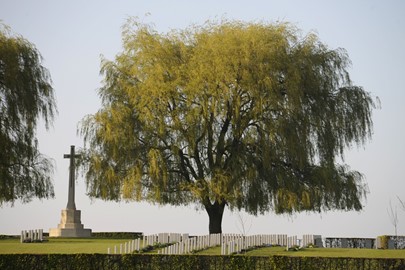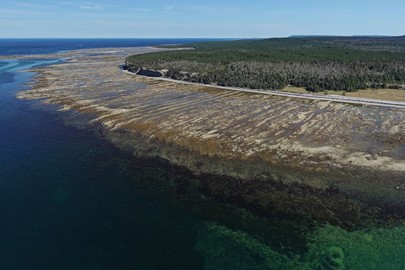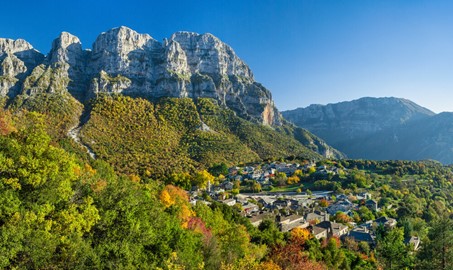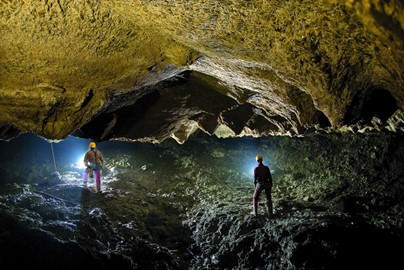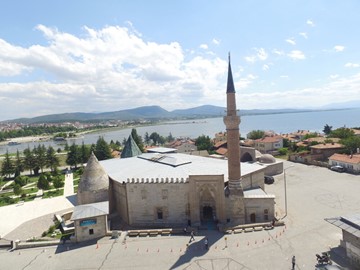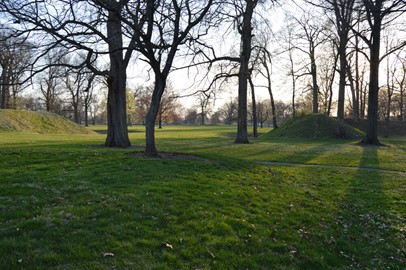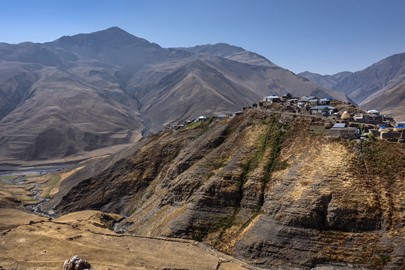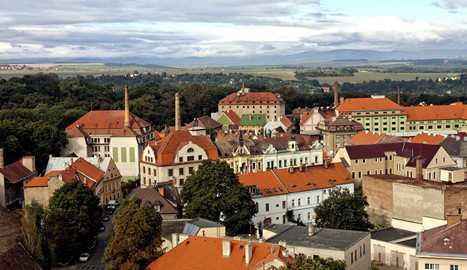region :: europe and north america
Megaliths of Carnac
The Megaliths of Carnac, a UNESCO World Heritage site in France, are an extraordinary collection of over 3,000 prehistoric standing stones, including menhirs, dolmens, and tumuli, erected during the Neolithic period around 4500–3300 BCE. Renowned for their vast alignments, particularly at Ménec, Kermario, and Kerlescan, these monuments showcase the technical ingenuity of ancient communities. The site, including the intricately engraved Gavrinis cairn, reflects a symbolic landscape with mysterious cultural s... Read More
Palaces of King Ludwig II of Bavaria
The Palaces of King Ludwig II of Bavaria, a UNESCO World Heritage site, are celebrated for their architectural grandeur and historical significance. Neuschwanstein Castle, with its fairy-tale design, captivates visitors through its picturesque setting and intricate interiors. Linderhof Palace showcases opulent Baroque and Rococo styles, reflecting Ludwig’s extravagant vision. Herrenchiemsee, inspired by Versailles, features majestic halls and gardens, embodying royal splendor.
Minoan Palatial Centres
The Minoan Palatial Centres, a UNESCO World Heritage site in Greece, are iconic remnants of the Bronze Age Minoan civilization, flourishing from 2800 to 1100 BC. Knossos, Phaistos, Malia, Zakros, Zominthos, and Kydonia showcase sophisticated architecture with multi-story complexes, central courtyards, and advanced drainage systems. These palaces served as administrative, religious, and economic hubs, featuring vibrant frescoes and Linear A and B scripts, the earliest known writing in Greece.
Domus de Janas
The Funerary Tradition in the Prehistory of Sardinia – The Domus de Janas, a UNESCO World Heritage site in Italy, encompasses 26 monumental complexes of rock-cut chamber tombs from the Neolithic to Copper Age (5th to 3rd millennium BC). Known as 'fairy houses,' these hypogeic structures, carved into granite and limestone, feature intricate reliefs like bull horns and spirals, reflecting the spiritual beliefs of pre-Nuragic communities. Notable sites include the necropolises of Anghelu Ruju and Sant'Andrea P... Read More
Shulgan Tash Cave
The Rock Paintings of Shulgan-Tash Cave, a UNESCO World Heritage site in Russia, are renowned for their Upper Paleolithic art, dating back 36,400 to 14,500 years ago. Discovered in 1959, the cave contains over 200 red ochre and blue pigment drawings, depicting mammoths, horses, rhinos, and geometric symbols, reflecting a unique artistic style. These vivid artworks, found in multiple chambers, suggest a significant cultural center in the Paleolithic era.
Sardis and the Lydian Tumuli
Sardis and the Lydian Tumuli of Bin Tepe, a UNESCO World Heritage site in Turkey, represent the legacy of the ancient Lydian civilization, with Sardis serving as its capital and the birthplace of coinage under King Croesus. The city features remarkable ruins, including a grand Ionic Temple of Artemis, a Roman bath-gymnasium complex, and the largest ancient synagogue known, showcasing a blend of Lydian, Persian, Hellenistic, and Roman influences. The nearby Bin Tepe necropolis, with over 100 monumental tumul... Read More
Mons Klint
Møns Klint, a UNESCO World Heritage Site on Denmark’s island of Møn, features dramatic white chalk cliffs rising up to 128 meters above the Baltic Sea. Formed millions of years ago, these cliffs showcase unique geological formations and rich fossil deposits, attracting nature enthusiasts and scientists alike. The site includes scenic hiking trails, diverse flora and fauna, and stunning coastal views, making it a must-visit natural wonder. Its cultural significance and well-preserved landscape draw visitors ... Read More
Vjetrenica Cave, Ravno
Vjetrenica Cave, a UNESCO World Heritage site in Bosnia and Herzegovina, is renowned as the country's largest cave and a global biodiversity hotspot. Located in the Dinaric Alps, it features over 7 kilometers of passages adorned with stunning speleothems like stalactites and stalagmites, and hosts a remarkable array of subterranean species, including 37 endemic ones. Known for its strong, cool winds at the entrance and a constant 11°C temperature, this karstic wonder also preserves ancient cave drawings and... Read More
Marquesas Islands
Te Henua Enata, a UNESCO World Heritage Site in the Marquesas Islands, is an exceptional cultural landscape highlighting Polynesian history and traditions. Known for its dramatic volcanic terrain, ancient archaeological sites, and sacred ceremonial structures, it represents the profound connection between the Marquesan people and their environment, preserving their cultural identity and heritage.
Schwerin Residence
The Schwerin Residence Ensemble, a UNESCO World Heritage site in northeastern Germany, is a 19th-century architectural and landscape masterpiece centered around Schwerin Castle. Located on an island in Lake Schwerin, this romantic historicist complex, built largely between 1845 and 1857, reflects the grandeur of the Grand Duchy of Mecklenburg-Schwerin with its Neo-Renaissance, Neo-Baroque, and regional Johann-Albrecht styles. Spanning 38 elements, including palaces, cultural buildings, and gardens, it survi... Read More
Via Appia
Via Appia, known as Regina Viarum or 'Queen of Roads,' is a UNESCO World Heritage site in Italy, recognized as the country’s 60th listing in July 2024. Stretching 800 kilometers from Rome to Brindisi, this ancient Roman road, begun in 312 BCE, was a marvel of engineering with its basalt-paved surface and sophisticated drainage. Lined with monuments, aqueducts, and tombs, it served as a vital military and trade artery, shaping Rome’s expansion and leaving a lasting legacy as the world’s first 'superhighway.'... Read More
Frontiers of the Roman Empire Dacia
The Frontiers of the Roman Empire – Dacia, a UNESCO World Heritage site in Romania inscribed in July 2024, encompasses the northernmost boundary of the Roman province of Dacia, established in 106 CE after Trajan’s conquest. Stretching across western Romania, this 1st–2nd century limes features 282 components, including forts, watchtowers, and settlements, built with stone, earth, and timber to defend against external threats. Integrated into the broader Frontiers of the Roman Empire listing, it showcases Ro... Read More
Kenozero Lake
Kenozero Lake, a UNESCO World Heritage site in Russia’s Arkhangelsk region, inscribed in July 2024, is a cultural landscape within Kenozero National Park, shaped by Slavic colonization since the 12th century. Spanning forests, lakes, and traditional wooden villages, it blends Finno-Ugric forestry with Slavic agriculture, featuring iconic wooden churches and chapels adorned with painted “heavens” ceilings. This remote site, a UNESCO Biosphere Reserve since 2004, reflects centuries of communal land management... Read More
Saint Hilarion Monastery
The Saint Hilarion Monastery, a UNESCO World Heritage site in Israel, inscribed in July 2024, is a 4th-century Christian complex founded by Saint Hilarion near Deir al-Balah. Recognized as one of the Middle East’s oldest monasteries, it features successive churches, mosaics, and a crypt, reflecting its role as a hub for early monasticism and trade between Asia and Africa. This site preserves ancient mosaics, structures, and artifacts, reflecting the rich heritage of the region.
The Flow Country
The Flow Country, a UNESCO World Heritage site in Scotland’s Highlands, inscribed in July 2024, is the world’s first peatland to earn this status and the UK’s 35th listing. Covering 190,000 hectares of Caithness and Sutherland, this vast blanket bog, formed over 9,000 years, is the planet’s largest, storing immense carbon and supporting rare wildlife like red-throated divers and golden plovers. Recognized for its ecological significance, it joins iconic natural sites like the Great Barrier Reef, highlightin... Read More
Targu Jiu
The Brâncuși Monumental Ensemble of Târgu Jiu, a UNESCO World Heritage site in Romania inscribed in July 2024, is a modernist sculptural collection in southwestern Romania’s Târgu Jiu, created by Constantin Brâncuși in 1937–1938 to honor World War I heroes. Spanning a 1.5-km axis along the Avenue of Heroes, it features the iconic 30-meter Endless Column, the Gate of the Kiss, and the Table of Silence, blending abstract art with landscape and urban design. As Romania’s 11th UNESCO site, this 20th-century mas... Read More
Funerary and memory sites of the First World War
The Funerary and Memory Sites of the First World War (Western Front), a UNESCO World Heritage site inscribed in September 2023, span 139 locations across Belgium and northern France along the 700-km Western Front of World War I. These sites, including cemeteries and memorials, honor the fallen from over 130 nations with individual graves and tributes, reflecting a universal commitment to remembrance. Designed by renowned architects and artists, they feature diverse yet dignified landscapes, from vast necrop... Read More
Anticosti
Anticosti, a UNESCO World Heritage site in Quebec, Canada, inscribed in September 2023, is a remote island in the Gulf of St. Lawrence renowned for its exceptional fossil record. Spanning over 9,200 square kilometers, it preserves the world’s most complete evidence of marine life from 447 to 437 million years ago, documenting Earth’s first mass extinction. Protected within a national park, biodiversity reserve, and ecological reserves, its untouched cliffs, rivers, and 1,440+ fossil species make it a global... Read More
Zagori
The Zagori Cultural Landscape, a UNESCO World Heritage site in northwestern Greece inscribed in September 2023, spans the Pindus Mountains in Epirus, featuring 46 stone-built villages known as Zagorochoria. Nestled in a remote rural setting, these settlements, linked by stone bridges, cobbled paths, and staircases, showcase traditional architecture adapted to the rugged terrain, reflecting Byzantine and Ottoman influences from the 15th to 19th centuries. Recognized as Greece’s first modern-era cultural land... Read More
Evaporitic Karst and Caves
The Evaporitic Karst and Caves of Northern Apennines, a UNESCO World Heritage site in Italy inscribed in September 2023, span Emilia-Romagna’s gypsum landscapes, hosting over 900 caves formed by evaporite dissolution over 250 million years. Recognized as Italy’s 59th UNESCO site and its first geological listing, this 100-km network includes the world’s most extensive and colorful evaporitic karst, with rare minerals, deep shafts, and underground rivers shaped by Triassic and Messinian salinity crises. Prote... Read More
Eisinga Planetarium
The Eise Eisinga Planetarium, a UNESCO World Heritage site in the Netherlands inscribed in September 2023, is the world’s oldest working planetarium, built between 1774 and 1781 by amateur astronomer Eise Eisinga in Franeker, Friesland. Housed in his living room, this intricate mechanical model of the solar system, powered by a single pendulum clock driving nine weights, accurately tracks planetary orbits on a painted ceiling. Recognized as the Netherlands’ 13th UNESCO site, it reflects Enlightenment-era sc... Read More
Wooden Hypostyle Mosques
The Wooden Hypostyle Mosques of Medieval Anatolia, a UNESCO World Heritage site in Turkey inscribed in September 2023, comprise five Seljuk-era mosques built between the late 13th and mid-14th centuries across Afyon, Ankara, Eskişehir, Konya, and Kastamonu provinces. Known as “forest mosques,” they feature masonry exteriors and interiors with multiple wooden columns supporting flat ceilings, showcasing exceptional woodcarving and nailless construction techniques. Recognized as Turkey’s 21st UNESCO site, the... Read More
Hopewell Ceremonial Earthworks
The Hopewell Ceremonial Earthworks, a UNESCO World Heritage site in Ohio, USA, inscribed in September 2023, encompass eight monumental complexes built by the Hopewell culture between 1 and 400 CE. Spanning Newark, Chillicothe, and other sites, these geometric enclosures—circles, squares, and octagons—crafted from earth, feature precise astronomical alignments and served as ceremonial hubs for a vast trade network across half of North America. As the USA’s 25th UNESCO site, they showcase pre-Columbian engine... Read More
Khinalig
Khinalig, a UNESCO World Heritage site in Azerbaijan inscribed in September 2023, is a high-mountain village in the Greater Caucasus, recognized for its cultural landscape and the 200-km Köç Yolu transhumance route. Perched at 2,350 meters, this 5,000-year-old settlement is home to the semi-nomadic Khinalig people, who maintain ancient traditions and a unique language while seasonally migrating livestock between mountain summer pastures and lowland winter plains. Featuring stone houses, sacred forest fragme... Read More
Zatec
Žatec and the Landscape of Saaz Hops, a UNESCO World Heritage site in Czechia inscribed in September 2023, is a historic hop-growing region in the Ústí nad Labem area along the Ohře River. Renowned for over 700 years of cultivating the prized Saaz hops, used in beers like Pilsner and Guinness, this site includes the well-preserved medieval town of Žatec, its 19th-century industrial quarter, and surrounding hop fields and villages like Trnovany and Stekník. As the world’s first hop-growing area on the UNESCO... Read More
















